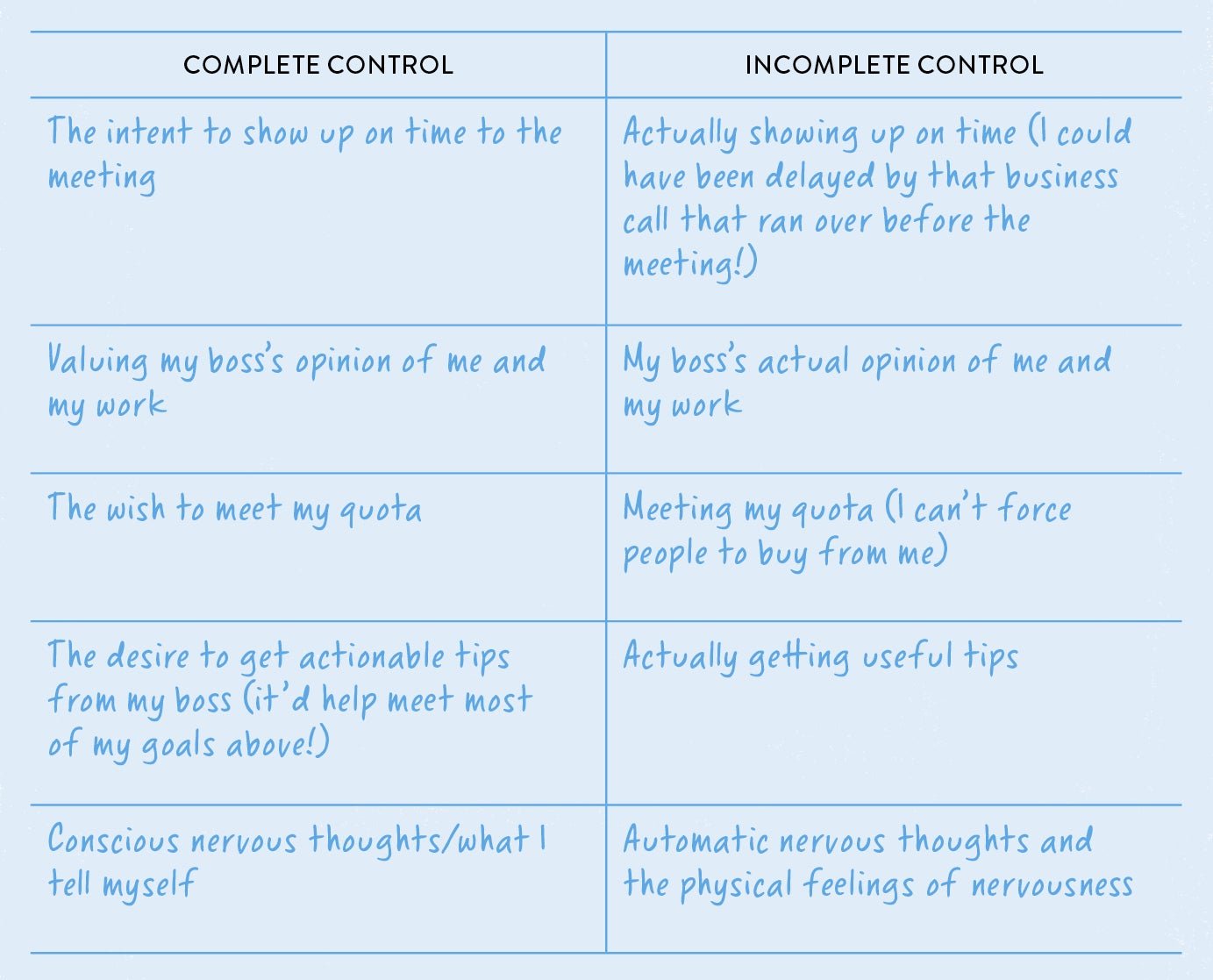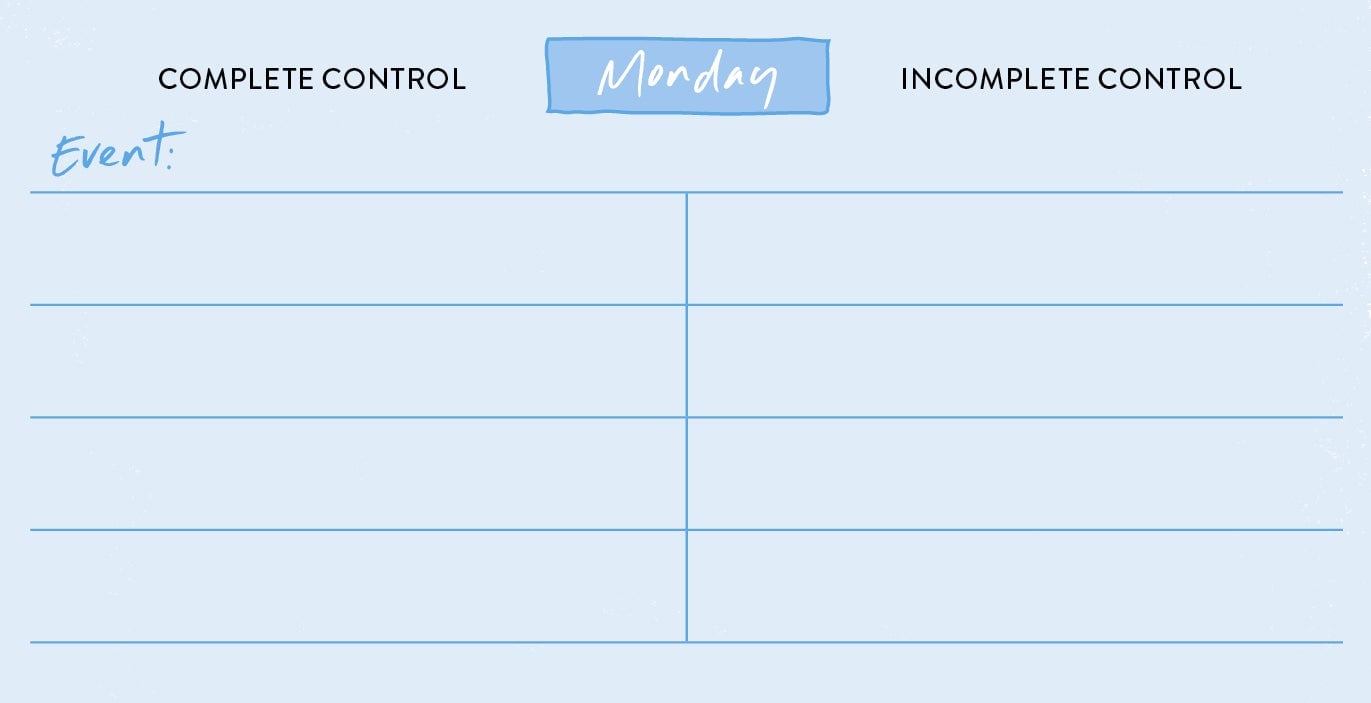This simple philosophy can calm your inner control freak
God, grant me the serenity to accept the things I cannot change,Courage to change the things I can,And wisdom to know the difference.


God, grant me the serenity to accept the things I cannot change,Courage to change the things I can,
And wisdom to know the difference.
This prayer was written by theologian Reinhold Niebuhr in 1934, but it reflects wisdom that is common to Jewish, Christian, and Buddhist traditions—and to Stoicism.
The underlying concept is central to Stoic practice and is often referred to as the “dichotomy of control.” Epictetus begins the Enchiridion—his manual on Stoicism—with it, and it is one of the most cited Stoic sayings, having countless applications in daily life.
Let us first understand exactly what Epictetus means by his words. He is dividing the world into two big chunks: the set of things under our (complete) control and the set of things not (completely) under our control.
The basic idea is that it is imperative to use our mental energy to focus on what is under our complete control, while regarding everything else as indifferent. For those things that are not under our complete control, it isn’t that we stop caring about them, but rather that we come to a deep understanding that we cannot guarantee that these indifferent things will turn out the way we wish them to. The way we come to this understanding is through constant practice.
This practice is the path toward ataraxia, the Greek word meaning serenity. We become serene by training ourselves to only want what is completely in our control—so in a very real sense, we’ll be serene because we always get what we want! This is the promise of the Discipline of Desire.
What does Epictetus say is in our control, and what is not? Under our control, according to him, are “thought, impulse, will to get and will to avoid, and, in a word, everything which is our own doing.”
We need to be careful here, because these English words don’t necessarily carry the same connotations as their original Greek counterparts. Moreover, modern Stoics (such as ourselves!) may want to take into account advances in the cognitive sciences that were not available to Epictetus, and so we may arrive at a somewhat modified list of what truly is under our control.
To understand what Epictetus is getting at, let’s break down the process further.
Thought in Stoicism
“Thought” here is the English translation of hypolepsis, literally “grasping under” or “taking up.” More figuratively, this means “judgment” or “opinion” (similar to scooping up an idea or viewpoint—you’re grabbing under it to grasp or cradle it). These can be types of thoughts, and are not necessarily fully conscious ones.
Epictetus may have listed “thought” first as it’s the first step in how we upset ourselves: We judge things to be inherently good or bad. Sometimes these judgments are explicit (e.g., thinking to yourself That guy’s a moron!). But they don’t have to be. For example, if you get angry at a person, you are implicitly judging the person’s actions as bad, even if the words “that person is doing a bad thing” never cross your mind.
Impulse in Stoicism
Next comes “impulse” (horme in Greek). This is an impulse to act, but not necessarily in a base or automatic way (what we may think of as impulsive). Pulling your hand away from a hot stove and screaming is not an impulse in the way Epictetus uses the term.
Instead, impulses come about from the first step of “thought” or “judgment.” If you judge something to be good, you’ll want it. If you judge it to be bad, you’ll want to avoid it. Impulses are then urges to act based on value judgments.
The will to get and to avoid in Stoicism
From thought (the judgment) and impulse (the desire to act) comes the “will to get and to avoid.” We decide if it is worth spending the energy, time, and money.
For example, we consider these expenses when buying a brand-new car, reflecting the value judgment that possessing it is a good thing. Then we go about and make complex plans to acquire the new car. So our complex, conscious actions come about from value judgments and impulses to act.
Epictetus claims that all three of these things—thoughts, impulses, and the will to avoid and to get—are ultimately under our control. It is no accident that these three areas of complete control correspond to Epictetus’s three disciplines:
- You work with thoughts in the Discipline of Assent,
- impulses in the Discipline of Action,
- and the will to avoid and to get in the Discipline of Desire.
In this way, Stoic practice trains you to master all areas of what in theory you can control. That’s Stoic training in a nutshell.
Just because these things are in your control doesn’t mean that they aren’t sometimes influenced by external factors (such as other people’s opinions) or by internal ones (such as your physical sensations or more automatic urges, like a craving for a snack). But, ultimately, they are under your control because you can make a conscious decision to ignore your cravings or to override the opinions of others when it comes to your own choices.
What about the sort of things that Epictetus says are not under our control? They include “the body, property, reputation, office, and, in a word, everything which is not our own doing.” This is a very large set that essentially comprises all things external to our conscious mind. Our body can get sick despite our best efforts at taking care of it; we may lose our property because of accident or theft; our reputation may be ruined due to circumstances we cannot influence; and we may lose our job through no fault of our own.
You may object that the sort of things we just mentioned are, however, under our partial control. They are not similar to, say, the weather, about which we can truly do nothing at all. Of course, Epictetus knew this! What he is saying here is akin to the “best bet argument”: If you bet your peace of mind on things not completely in your control, you’re willingly forfeiting part of your happiness to random chance.
Want to practice?
How to work out what is in your control
This week’s exercise will help you explore the dichotomy of control. Take time now to choose when you’ll do the exercise each day for the rest of the week. Try to place the exercise toward the end of the day. You can plan to do it at a specific time (e.g., at 9:00 pm) or after an activity you do every day (e.g., brushing your teeth at night).
Sit down at this time Monday through Saturday of this week and choose something that happened that day to write about. It can be anything from seeing a friend for lunch to a meeting at work. We suggest that you choose an event that wasn’t too emotionally upsetting, which could make the exercise more difficult, and you’re just starting out!
List what aspects of the event were completely in your control and which weren’t. It may help to add some quick reasons why the thing was or wasn’t in your complete control.
If you have trouble with the exercise, you can use Epictetus’s suggestions of separating out value judgments, impulses, and what you wished to avoid or obtain, as things under your complete control. You can also try separating aspects of the event by “internal” factors (thoughts, desires, wishes) and “external” factors (results), since we can mostly control what goes on inside our heads, and much of what we can’t control happens in the outside world.
Don’t feel shackled to these categories. Part of the goal of this exercise is to see whether Epictetus’s suggestions hold true to your experience. Perhaps you’ll find he was correct, and perhaps not.
Let’s look at an example of how this would work.
An exercise in Stoicism
Consider our friend Alice. Her quarterly performance review is coming up, and though she’s been doing well, a familiar anxiety floods her body as negative what-if scenarios cross her mind.
She chooses a meeting with her boss as the event she’ll focus on. Here’s what she writes.
Met with the boss at 2 pm to discuss latest sales numbers. I was a little nervous going in since I’m not quite at quota yet. We sat down and discussed what action steps I could take to reach quota by the end of the quarter. A lot of the suggestions were useful.
Notice that Alice chose an event that she was a little nervous about, but that wasn’t extremely distressing for her. After Alice writes about the event, she rereads the narrative, looking for things that were completely within her control. She comes up with the following list.

Alice repeats this exercise daily through Saturday after her run. Notice that the left-hand column is mostly filled with internal things like wants, desires, wishes, and conscious intentional thoughts. The right-hand column is mostly filled with external results. The exception is the final row, which has automatic thoughts and physical sensations as not within complete control.
This highlights the important point that not everything that goes on in our bodies and minds is willed. Alice didn’t choose for her heart rate to rise, nor did she rationally decide to dwell on worst-case scenarios. However, once those have occurred, she can consciously choose what to tell herself and how to act in spite of those automatic responses.
Now it’s your turn. Write down something that happened recently that gave you a small amount of anxiety. Now work out what was in your control and what wasn’t.

By doing this exercise daily, looking at specific events in your life, you’ll start to internalize what is really under your complete control and what isn’t. As this principle sinks in, you will be equipped to practice the Discipline of Desire. This exercise will also give you a clearer picture of what exactly you should focus your desires and aversions on to achieve peace of mind.
Excerpted from A Handbook for New Stoics: How to Thrive in a World Out of Your Control © Massimo Pigliucci and Gregory Lopez, 2019. Reprinted by permission of the publisher, The Experiment.